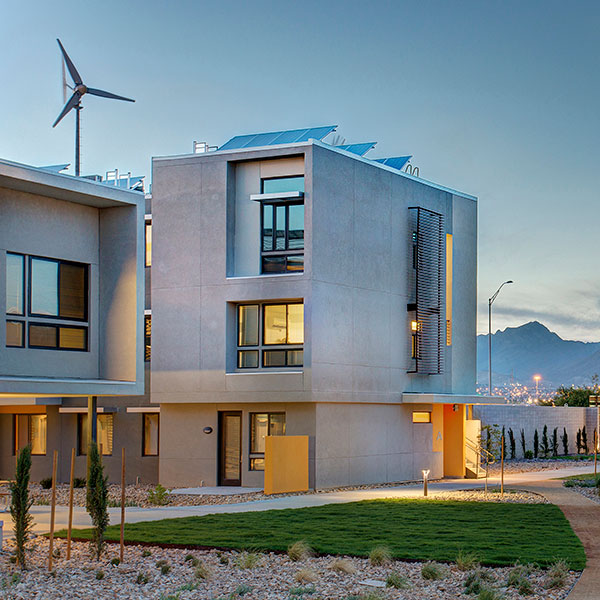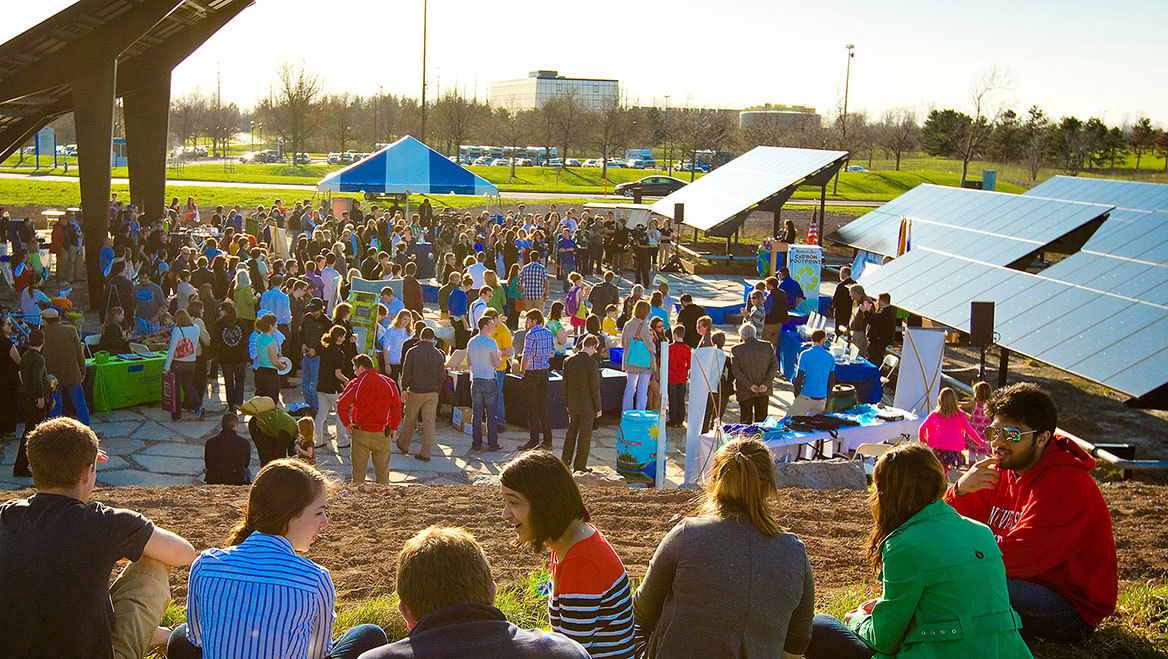March 25, 2022
"Homes of any size and for any income level can be designed to meet their own energy needs," argues author Jared Green in his gorgeously illustrated book Good Energy: Renewable Power and the Design of Everyday Life. Fifteen of its 35 case studies deal with housing; the remaining 20 include community spaces, schools, offices, and power plants, with roughly half from the U.S. and half from overseas.

The book is a visual treat that doesn't duck difficult questions. For instance, the reader learns that El Paso's new 73-unit complex for seniors and people with disabilities earning 30 percent or less of the annual median income "produces all the energy the community consumes in a calendar year." While it cost about twice as much to build as a conventional public housing project, maintenance costs are low, and the complex pays nothing for energy.

The Paisano Green Community Senior Housing development in El Paso, Texas, meets its own energy needs through a mix of energy efficiency strategies, 640 rooftop PV panels, and two 60-foot-tall Xzeres wind turbines. WORKSHOP8 designed a housing complex for El Paso's housing authority that is 85 percent more energy efficient than the city's building code mandates. Photo by Jesse Martinez.

The first phase of the Grow Community on Bainbridge Island, Washington, was designed using One Planet Living's sustainability and health-focused principles by Davis Studio Architecture and Design. The walkable community includes 42 apartments and densely set single-family homes, plus 20 raised gardening beds for food production. The net-zero energy development generates 176 megawatts annually, resulting in significant energy savings for homeowners. Photo by David Cohen.
How does this new net-zero, energy-positive world work? The book's introduction points to a few tactics, like extra planning and openness in the face of policy and regulatory obstacles, financial innovations that lower costs, integrating novel technologies and approaches that serve multiple functions, and using these projects to educate local communities. The author also suggests replacing mined and processed materials with "local, sustainably harvested structural wood that stores carbon or reuses waste materials."

Students, faculty, and the community mingle in outdoor classrooms amid the artful, publicly accessible power plant of the Solar Strand, set within restored wetlands and grasslands at the University at Buffalo in New York. Designed by landscape architecture firm Hood Design Studio, the strand is a quarter mile-long array of 3,200 photovoltaic panels and is designed to get people thinking about the possibilities for renewable energy by allowing them to see it in action up close. Photo by Douglas Levere.
The text includes both high- and low-end projects in widely differing locales and addresses difficulties. One brief mention reaches beyond design: "To protect our remaining ecosystems and biological diversity, there needs to be more compact infill development in urban and suburban centers. Development outside these areas should be strictly reserved for regenerative projects that support ecological preservation and restoration."
This seems likely to be a tough sell. Can advanced building designs like these pave the way for urban planning boundaries with teeth?

In Örebro, Sweden, a series of prefabricated net-zero energy passive houses that generate 4 megawatts of energy annually was designed by Street Monkey Architects. Energy generated by rooftop PV panels also powers electric vehicle chargers in parking areas. Any excess energy is collected by 40-kilowatt battery cells, then sold to Örebro's grid when the batteries are full. Photo by Mattias Hamrén.




